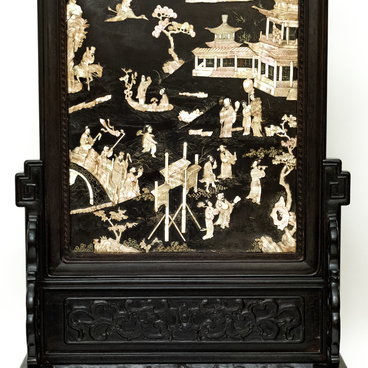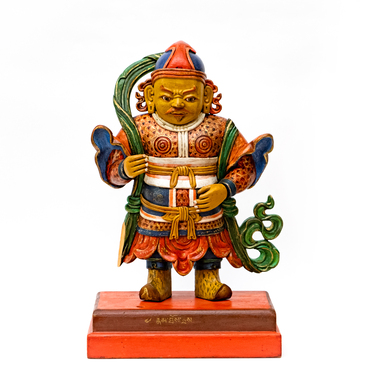The collection of the Sakha Republic National Art Museum includes a painting by Francesco di Cristofano Bigi “Madonna at the Well.”
The work exemplifies a typical Renaissance pyramidal composition against the background of a mountainous area. The figures are given in close-up view from a low angle. The Madonna in a red dress and a blue cape holds the Christ Child in Her arms. The artist uses diagonals to add dynamism to the image: little Jesus embraces His mother’s neck and playfully tries to get down from Mary’s lap. On the left, the artist depicts the boy John with the cross, holding out a ribbon to the Madonna, on which the Latin letters CC are visible.
The landscape atmosphere is conveyed well. It depicts a shining summer day. Against the background of a blue sky with light clouds, the figure of the graceful Mary in a red chiton and a blue cloak clearly stands out. The painting is distinguished by subtle transitions from light to shadow, especially in the background. The artist skillfully creates a perspective in the landscape: blue mountains stretch out in the very depths of the painting, on the left one can see a well against the background of ruins, and on the right — a building and a road with a figure of a lonely traveler. The paths and roads symbolize the incessant movement of life. The foreground is painted in rich brownish-olive colors.
A representative of the High Renaissance, Francesco di Cristofano was nicknamed Franciabigio by his contemporaries because of his character. This word means gray, gloomy Francia. Franciabigio was born in Florence to a weaver’s family on January 30, 1482 or 1483. He studied under Mariotto Albertinelli (1474–1515), but Raphael had a far greater influence on the artist. For a long time Francia shared a studio with Andrea del Sarto, with whom he later opened a studio. Competing and influencing each other, they greatly enriched the pictorial art of their time.
According to Giorgio Vasari, Francia loved to live
alone and for this reason never married. In the past, many of the famous
paintings of the artist were attributed to his contemporary Raphael
(1483–1520). He worked mainly in Florence, and was also influenced by Leonardo
and Michelangelo. Francia constantly improved his skills in working with
perspective and already in his youth was regarded in Florence as a great master
of his craft.


